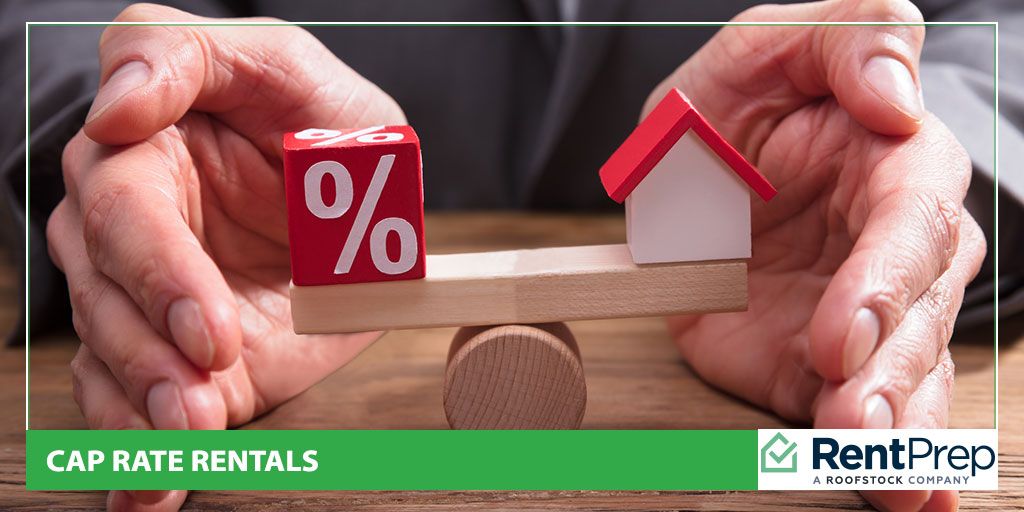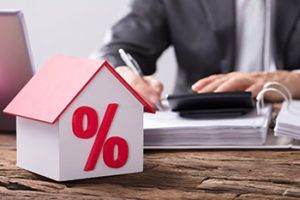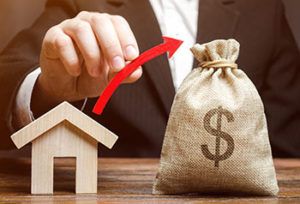
Tracking the success and growth of your rental business is only possible with the right figures, formulas, and perspectives. One of the most valuable tools for investors is the cap rate for rentals, also known as the capitalization rate.
Cap rates boil down a variety of information that gives you an idea of the expected return on a property investment. Without this number, it’s hard to determine if you’re doing well in your market, if you’re losing money, or which of your properties is performing best. Cap rate clarifies all of that and more.
Take some time to learn about cap rates on rental properties and how to calculate your own cap rates. This information will help you take your business growth to the next level.
A Table Of Contents On Rental Property Cap Rates
Ready to forecast your income with cap rates? To do this and also to analyze your previous years’ performances, it’s time to learn how to calculate cap rates on rental properties with today’s guide:
- What Is A Cap Rate?
- How To Calculate Cap Rate For Rental Property
- What Is A Good Cap Rate For Rental Property?
- Contextualizing Cap Rates For Your Business
- FAQs On Cap Rate For Rentals
- Moving Forward With Cap Rate For Rental Property
What Is A Cap Rate?

Cap rate is a commonly used abbreviation for capitalization rate. This rate is used to help determine and analyze the rate of return from an investment or rental property.
Landlords and investors calculate cap rates to forecast future profits as well as to analyze how properties are currently performing.
Cap rate is known to be a very reliable way to put a number to the current profitability of your business or a specific property. It’s also heavily utilized before new property purchases are completed. Investors find that it’s a quick and dependable way to determine whether or not a specific property makes sense as a rental.
Cap rates are, of course, only estimates. There is no way to calculate the future profitability of a property with 100% accuracy, but cap rate is known to be very dependable. Cap rate is reasonably accurate as long as the numbers used for calculations are correct.
When analyzed in conjunction with the right data, cap rates can be invaluable numbers in your toolbox.
How To Calculate Cap Rate For Rental Property
The basic cap rate formula is relatively straightforward. Simply divide the property’s NOI (net operating income) by its fair market value. Then multiply the resulting number by 100 to obtain the cap rate.
When calculating NOI, it’s essential to do so accurately. NOI includes all expected property income less property management expenses, taxes, and all other operating costss. In most cases, mortgages and additional financial activity costs should not be included in the NOI calculations.
The Occupancy Effect
If you’re working with short-term rentals or know that occupancy rates in the area vary widely, make sure you work this knowledge into your NOI when calculating cap rates.
For example, you can adjust your NOI to match an 80% occupancy rate by multiplying the potential gross annual rental income by .8 before subtracting the operating expenses for the property. This will factor in the expected occupancy and give you a more realistic idea of what to expect from a rental property.
What Is A Good Cap Rate For Rental Property?
The answer to this question is one that no one likes to hear: it depends.
In an ideal world, cap rates would fall between 8% and 12%. However, that number varies widely depending on location, property type, tenant occupancy, and many other factors. Some markets can only expect a 4% cap rate, while others perform strongly at 10%.
Overall, average cap rates should hit around 4% or 5% at a minimum. For financial institutions, good cap rates fall between 5%-10%.
Rather than relying on what others deem to be a “good” cap rate, many landlords instead use what they consider a “safe” cap rate. A safe cap rate is the amount of profitability you’re comfortable with expecting. Depending on your upfront investment and future plans, this rate will vary from landlord to landlord.
Though it may seem like a high cap rate means you’ll make the most profit, cap rates are not always as straightforward as they seem. Many landlords actually prefer lower cap rates. Lower rates are associated with lower risk, while high rates leave more room for investments and risks taken to fall through.
Ultimately, the right cap rate for your business is up to you. As long as you’re comfortable with the cap rate on your investment properties, you can use this calculation to scale the growth of your business.
Location Matters
Every market is different. In some markets, it’s impossible not to have vacancies. Other markets are so saturated with tenants that tenant retention is no longer the primary issue. Keep this in mind when considering and comparing cap rates.
What types of cap rates apply best to your property’s location? Urban markets typically have lower cap rates due to high property costs, while rural market rates are higher. Depending on vacancy rates, however, the two properties could be more comparable than one might assume.
Property Type Matters
Another factor to consider when comparing and analyzing cap rates is the property type. What type of property are you managing and what cap rate matches that property?
Multi-family units, for example, tend to have lower cap rates than single-family units. This is due to some of the expenses being shared between multiple properties and various other factors. It’s important to consider property type when looking at cap rates.
Contextualizing Cap Rates For Your Business

Understanding cap rates in the current market will help you contextualize what cap rates genuinely mean for your business.
No matter how you calculate cap rate, remember that the key takeaway needs to be potential earnings. Nothing is set in stone, and you should always use multiple metrics when analyzing your business and property performance. It’s a starting point, but there are many other checkpoints to consider.
Most landlords and investors use cap rates as a quick way to analyze potential properties. Without getting into the nitty-gritty details, this percentage gives you an idea of the property’s potential income.
Cap rate is best contextualized as a number representing potential yields and risk. There’s no doubt it’s a great tool, but remember that it doesn’t give you the complete story.
Keeping Up With Cap Rate For Rental Property
The quality of tenancies at your rental properties directly influences cap rates. Since cap rate is calculated using the net operating income of a property, you must consider tenant turnover and tenant acquisition costs in your overall analyses.
The simple fact of the matter is that choosing the right tenants and filling vacancies quickly will help improve cap rates. If you’re struggling to achieve good cap rates for rentals across the board, you might be having an issue with tenant acquisition rather than with the properties in question.
Improve your tenant screening and acquisition strategies with services like RentPrep. In addition to our high-quality tenant screening packages, we offer a vast variety of free resources to help landlords like you improve their business. Sign up for our newsletter and check out these free guides on our blog today.
FAQs On Cap Rate For Rentals
Still processing how cap rates fit into your broader business plans? Get a deeper understanding with these answers to some frequently asked questions from landlords about cap rates.
What is a good cap rate for a rental property?
In most markets, a good cap rate is recognized as falling between 8% and 12%. In some regions, however, favorable cap rates may be as low as 4%. There are a lot of factors, including location and property type, that alter the exact cap rate to look for.
The best way to determine what your cap rates should look like is first to analyze your current properties. What do their cap rates look like? How does that compare to your perspective on their profitability?
Then, find out average cap rates in your area through listings, research, rental prices, and other means. Approximate cap rates in your area help compare what makes sense for a business like yours. Over time, you’ll become more familiar with what level of risk associated with a specific cap rate works best for your business.
What is the difference between cap rate and ROI?
When you first read about cap rates, the formula and use may have reminded you of another vital calculation for landlords: ROI. Calculating ROI (return on investment) is very similar to calculating cap rate, but there are some slight differences.
Landlords and investors use both cap rate and ROI to determine if they should move forward with a deal. ROI, however, is better for comparing different assets, while cap rates are most helpful in comparing two similar properties. ROI also typically includes more investment costs, such as mortgage fees, while cap rates use the net operating income for calculations.
Ultimately, these numbers can be utilized in any way that works for your business. It’s important to know the difference, but both metrics benefit you.
What does a 7.5% cap rate mean?
If you’re looking at a property valued at $250,000 and have calculated a 7.5% cap rate, you can expect to see $18,750 in annual returns. The 7.5% cap rate represents the estimated gross yearly income that will be generated by the property.
While cap rates cannot predict the future, the metrics give investors like you an idea of what to expect.
Can a cap rate be too high for a rental property?
For some investors, seeing a cap rate that is too high means taking too much of a risk. High cap rates typically occur when asset values are low, so you’re dealing with a riskier investment. Keep in mind, however, that the specific part of the market that you’re in may have higher average cap rates.
The only way to know if a cap rate is too high or too low for your investment needs is to gain experience. Even if you aren’t using this metric to make your business decisions, regularly calculating cap rates on your properties and potential investments is a good way to get familiar with how the rate truly functions.
What is a good cap rate for a multifamily property?
Most landlords and investors agree that multifamily properties should have cap rates over 4% and under 10%. The exact placement within that range will depend on market value, location, condition of the property, and the current state of tenant supply and demand. Higher cap rates will show up whenever you’re dealing with high inventory, low demand markets.
Do cap rates go up when interest rates go up?
When interest rates go up, cap rates also tend to rise. Ultimately, changes in home value have the most significant effect on cap rates, so it’s important to keep a close eye on the market when utilizing this metric as part of your decision-making process.
Cap rates change any time your net operating income (NOI) or the fair market value of the property changes. If you find ways to increase your NOI, you’ll be able to achieve lower cap rates and reduce the overall risk of an investment. This is why many landlords focus on ways to increase NOI, such as decreasing tenancy turnover rates.
Moving Forward With Cap Rate For Rental Property
Cap rate is a comparative value that helps landlords like you understand what to expect out of a rental property. Not only can cap rate help you determine whether or not to invest in a property, it can also help you plan for the future of your portfolio.
Utilize cap rate in a variety of circumstances:
- Decide about future investment properties
- Set up a performance standard cap rate for your current properties
- Look for opportunities for growth
- Expand your business with increased revenue
Cap rate doesn’t do the work for you, but it does show you where to put in the work. This information is invaluable if you want your business to keep growing. It’s time to see what cap rate calculations can do for you.

